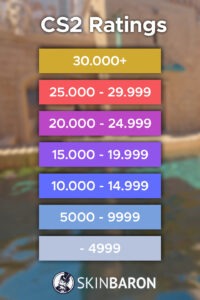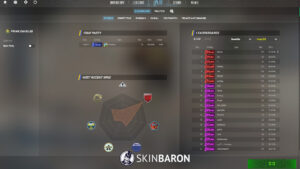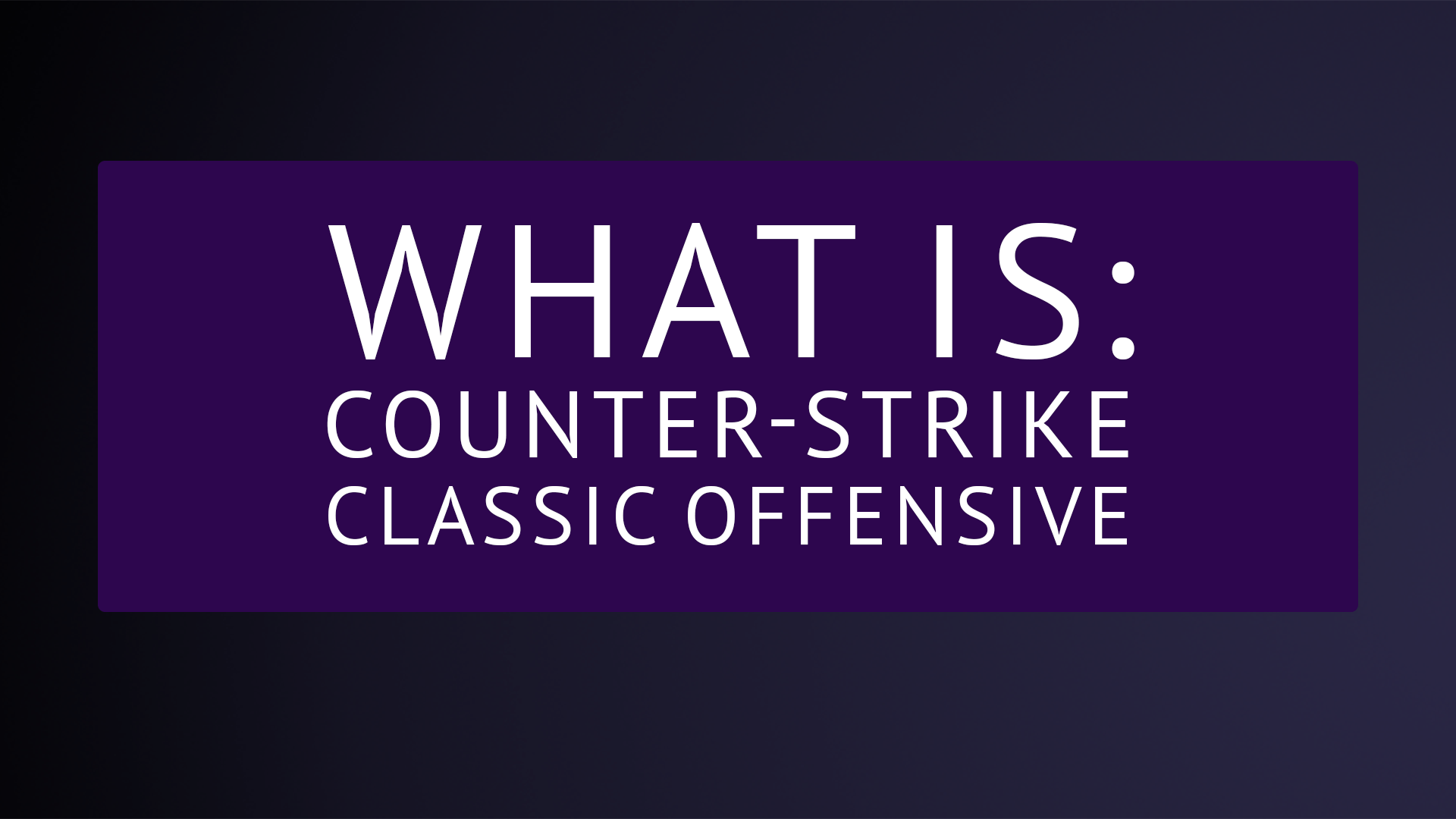With the release of Counter-Strike 2, Valve has also introduced a new rating system for the Premier gamemode. In this article, we’ll delve into the details of this new system, how it differs from the old one, and what it means for the competitive Counter-Strike scene.
The Classic ELO System
Before we discuss the changes, let’s briefly recap what the classic ELO system is. Named after Arpad Elo, who developed it for chess, the ELO rating system is widely used in competitive gaming, including CS. It assigns each player a rating based on their performance in matches, and the outcome of those matches can lead to changes in these ratings.
In the traditional ELO system, a player’s rating increases if they win and decreases if they lose, with the magnitude of the change depending on the difference in ratings between the two teams. In CS:GO, Valve used this system to rank players into various skill groups like Silver, Gold Nova, and Global Elite.
 The New ELO Rating System
The New ELO Rating System
With the new ELO rating system, Valve has made some significant adjustments to the way players’ ranks are calculated. These changes aim to address some of the concerns players had with the previous system and provide a more accurate representation of a player’s skill.
- Continuous Skill Rating: Unlike the old system that used distinct ranks, the new ELO system provides a continuous skill rating, allowing for a more granular assessment of a player’s skill. Players can see their exact rating, making it easier to gauge their progress.
- Personalized Adjustments: The system also considers the skill levels of opponents and teammates, adjusting ratings accordingly. If you win against higher-ranked opponents, your rating will increase more, and if you lose to lower-ranked players, the impact on your rating will be less severe.
Impact on the Competitive Scene
The introduction of this updated ELO rating system has caused quite a stir within the community, and it’s easy to see why. These changes have several significant implications for the competitive scene.
- Transparency: Players now have a more transparent view of their progress. They can see their exact rating and understand precisely how it changes with each match, making the ranking system less mysterious.
- Individual Skill: The new system puts a higher emphasis on individual performance, which is excellent news for players who consistently perform well but might be stuck in lower ranks due to unreliable teammates.
- Smurfing and Boosting: The new system attempts to make smurfing (experienced players using new accounts) and boosting (higher-skilled players artificially raising others’ ranks) less appealing. Smurfs will likely find it more challenging to maintain low ranks, as their personal performance will drive their rating upwards, and boosted players will face greater difficulty in maintaining ranks they didn’t earn themselves.
- Matchmaking Quality: As the system pays more attention to personal performance and the skills of teammates and opponents, matches are expected to become more balanced. This means fewer lopsided games, leading to a more enjoyable competitive experience.
 Conclusion
Conclusion
The new ELO rating system in CS represents a significant shift in how players are ranked and assessed. It puts more power into the hands of individual players, offers transparency, and aims to create fairer matches. While it may take some time for players to fully adapt to these changes, it’s clear that Valve’s efforts to enhance the competitive experience in Counter-Strike are a step in the right direction.
As the Counter-Strike community continues to explore the intricacies of this new system, it will be exciting to see how it shapes the future of competitive gaming in one of the most beloved first-person shooters in the world. Whether you’re a seasoned player or a newcomer, these changes promise to offer a more enjoyable and fair competitive experience for all.



